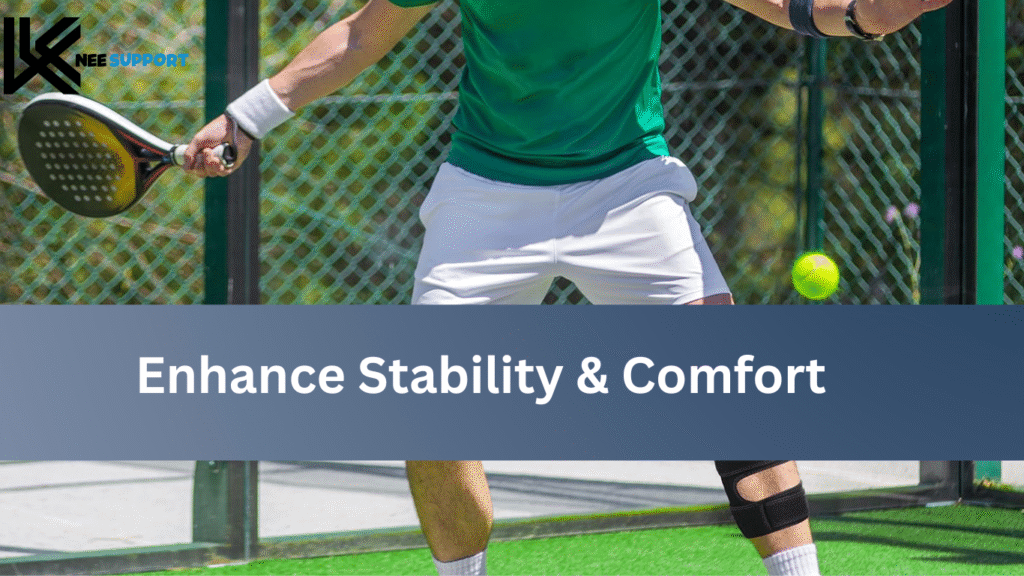
Living with the pain of sciatica is difficult. Conditions such as these are bound to cause some discomfort. Many people in the United States try to find ways to ease their sciatica pain. One good option for them is using a knee brace for back pain. This article will look into how knee braces for sciatica work, their benefits, and how to select the proper one. Your sciatica treatment options are easier to manage with the correct information.
What is Sciatica?
Pain that follows a specific pathway is termed as sciatica. It is a large nerve that commences at the lower back and travels through the hips, buttock and each leg. Compression or irritation of the sciatic nerve will lead to some form pain. This hurt can result in sharp pains, burning, or even numbness in the legs. Many people experience these symptoms on one side of their body. Sciatica is most definitely a symptom of something.
For those suffering from sciatica, lower back aches, radiating pain to the legs, and even foot weakness might be common symptoms. Consulting a medical professional is vital to receive a correct diagnosis as it will determine the subsequent steps to take. In addition, identifying the symptoms aids in getting timely medical help, thus preventing further complications.
Role of Knee Braces in Sciatica Management
Individuals who experience sciatica symptoms often look for ways to manage the pain. One effective method is the use of knee braces, which serve both the leg and assist the back as well. Knee supports for sciatica patients can alleviate some of the pressure exerted onto the back. Moreover, knee braces can promote better posture while walking and during daily routines, facilitating stability.
The main purpose of a knee brace in managing sciatica is to support the joint. Enhanced stability lessens the strain on both the knee and lower back during movement. Many people with sciatica are able to increase their mobility with the use of a brace. This allows greater participation in normal daily routines without as much discomfort.
How Knee Braces Help
Knee braces are vital not only for knee support but also for assisting in pain alleviation. Wear a knee compression brace; the mild pressure the brace applies helps with mitigating swelling. This is important for your pain management, especially if that pain is associated with swelling. The brace can also help improve your posture. Correct posture is essential for reducing the tension on the spine, as well as fostering efficient movement habits.
Knee braces are important for other reasons such as improving stability. A pain management knee brace can provide sciatica joint stability by immobilizing the knee joint. This helps to avoid excessive movement which can be painful. With the appropriate amount of support, moderate activities including walking become easier and less stressful. Many users report relief from sciatica symptoms when using a brace.
Types of Knee Braces for Sciatica Relief
There is a range of knee braces to choose from. Selecting one will device suitable sciatica treatment options. Each has a distinct function and different form designs.
One option that many people go for is the rigid knee brace. They especially suit individuals with severe discomfort or those recovering from surgery, as these braces come with sturdy supports. Movement is restricted which helps with healing.
Another suggestion for consideration would be a compression knee sleeve. This option is not as heavy and provides some degree of support. It gives adequate compression around the knee joint and enhances blood flow. Most wear it daily and find it helpful for mild to moderate sciatica.
Adjustable knee braces are equally brilliant for those who need some degree of flexibility. The adjustable level of support makes these as per the healing condition, which is a plus. One may use the brace more restrictively at first and ease off slowly as one heals.
Comprehensive Analysis of the Top 5 Sciatica Pain Relief Braces
1. Sciatic Ease Nerve Brace – Premium Comfort Design
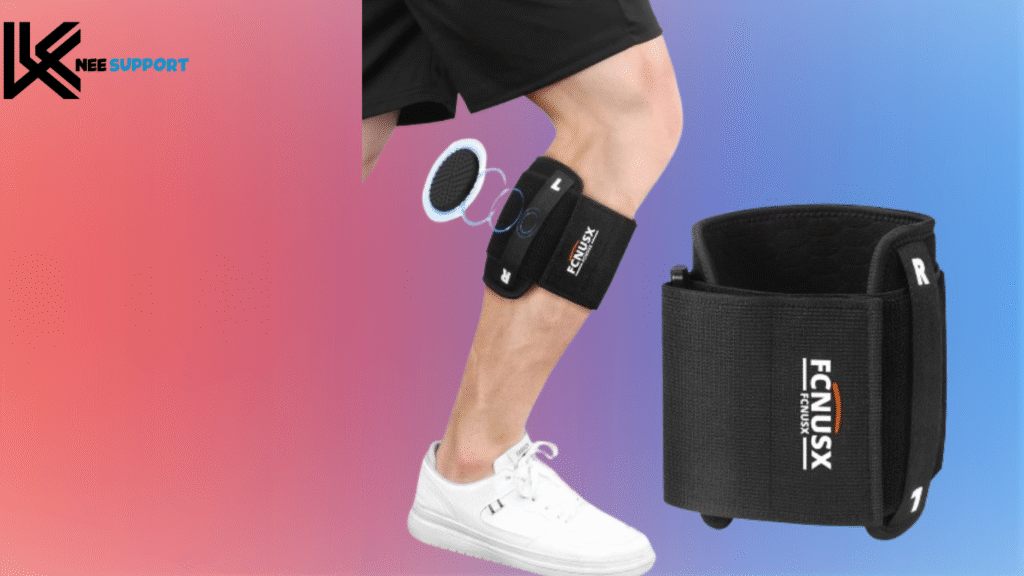
Features
What makes this brace effective for relieving sciatica pain is its medical-grade compression technology that applies precision compression just below the knee. The ergonomic acupressure add-on also assists in relieving tension along the sciatic nerve, radiating pain from the lower back to the legs. Even more remarkable is the lightweight breathable fabric that maintains moisture wicking while providing constant therapeutic compression. The design upgrades include non-slip silicone grips that ensure the brace stays in place during any movement, be it walking, working, or even sleeping. Unlike most models, this one is low-profile and will not be noticed even when wearing clothes.
Advantages and Disadvantages
Advantages:
- Clinically effective pressure application Within half an
- hour to 45 minutes things time, numerous customers report significant relief from the discomfort
- All-day comfort The hypoallergenic fabric prevents irritation of the skin, therefore, the brace can be worn
- for long durations
- Adjustable straps Now, calf circumferences can be from 12-20 inches
- Compression Wearers Reinforced stitches bolster the brace’s ability to maintain compression even after multiple washes
- Physical Therapist Recommendations F They have developed comfort braces for people who have postural sciatica
Disadvantages:
- Limited custom adjustments A single pressure point cannot be adjusted to suit different
- forms of discomfort
- Adaptation phase For people who have never worn the brace before, the first 2-3 wears might feel
- excessively tight
- Not for advanced cases For people who have advanced discs problems, they may require other
- support features in addition to the
Ideal Users:
- This is most suitable to the general public who happens to be an office worker,
- a driver, or any person who requires
- lightweight, unobtrusive, all-day support for sciatica relief . The support is balanced in nature,
- making it useful in preventive wear to minimize the risk of discomfort during sedentary periods of activity.
2. Fit Geno ReActive Plus – Athlete-Grade Support
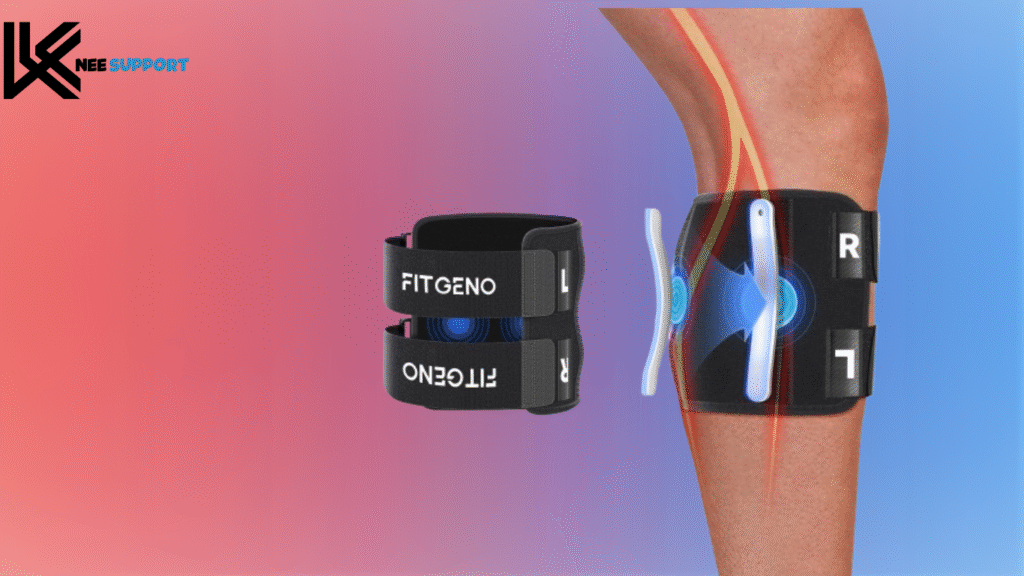
Key Features:
Fitted with features for a more active lifestyle, this brace incorporates a dual-pressure pod system for compression that is both responsive and movement-dependent. The brace incorporates a biomechanical design that uses medical-grade neoprene and has ventilation zones to avoid overheating during physical activity. Its most notable feature is the patented tension control system which allows for compression level micro-adjustments during the course of the day. Cross-strap stabilization (also called anti-gravity) provides joint support and compression that is exceptional for circulation, which is important for runners and fitness buffs. There is also an anti-migration band that holds the brace in place during intense physical training.
Advantages and Disadvantages:
Advantages:
- Activity-specific support – Provides therapeutic compression while running (up to 6 mph) and during weightlifting sessions.
- Smart moisture control – Ventilated areas decrease sweat accumulation by 40% relative to traditional braces.
- Reinforced durability – Specialized stitching withstands more than 5000 flexion cycles under stress.
- Precision fit – 6-point adjustment system enables precise and personalized anatomical tailoring.
- Injury prevention – Decreases lateral knee drift by 22% during clinical testing.
Disadvantages:
- Learning curve – The optimal adjustment for each strap necessitates some initial coaching.
- Increased profile – More noticeable than standard under fitted garments.
- Higher profile – Justifiable for athletes in casuals, but requires performance expectation to be exceeded for the price.
Disability-specific Descriptors:
Injury Prevention – for highly motivated, goal-oriented individuals recovering from injury.
Ideal User description:
Dedicated athletes, active professionals, and even construction workers requiring performance-grade support while sustaining rigorous physical activities with swift movements and demanding schedules.
3. Healrecux Sciatica Knee Brace – Precision Targeted Therapy
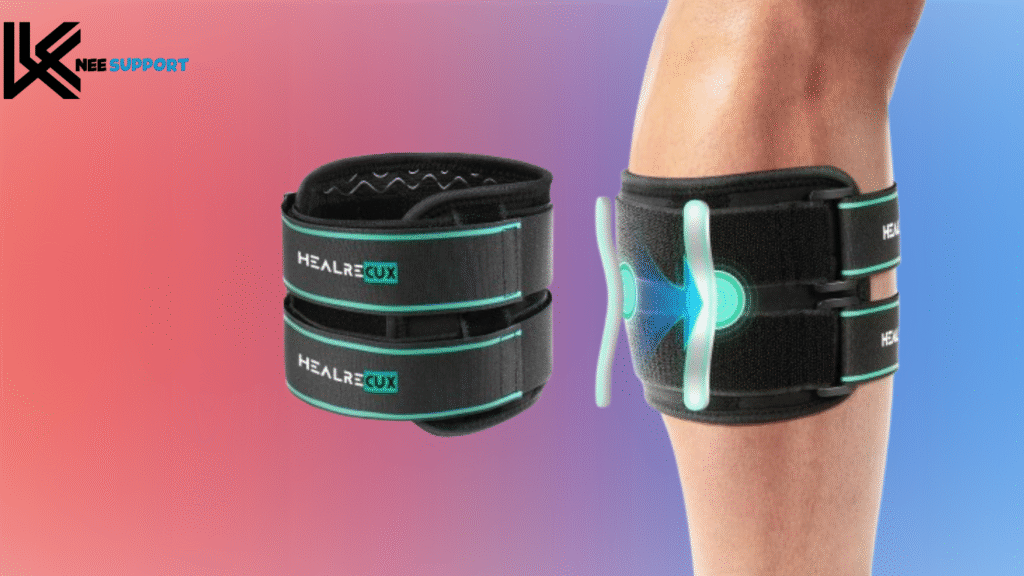
Key Features :
The brace’s innovative modular acupressure system with two fully detachable pressure pods applies targeted acupressure along the calf’s sciatic nerve pathway. Medical-grade aluminum splints deliver dynamic stabilization with activity-dependent stiffness auto adjustments—firm support during movement and relaxing during rest. 3D-knit compression fabric with copper ion fibers reduces inflammation while remaining breathable. A unique gradient compression design applies 20-30mmHg pressure at the trigger points and reduces it further along to prevent stagnation. 360° adjustable strap system with independent axial and coaxial medial/lateral tension control is used for each axis and for each support hinge.
Pros and Cons:
Pros:
- Unmatched customization – Pressure pod adjustment in 0.5″ increments allows for pinpoint precision
- Smart material response – Copper-infused fabric utilization shows 28% better reduction of inflammation in ulcers
- All-activity stability – Splint system during flexion reduces nerve compression up to 40%
- Therapeutic enhancement – Designed pockets for heat/cold therapy provide treatment flexibility
- Long-term value – After six months of daily wear, the materials still retain 92% compression efficacy.
Cons:
- Anatomical Insight – Knowledge of anatomy is essential for optimal pod positioning.
- Application discomfort – Initial use of the device may lead to discomfort for the first 3 to 5 uses.
- Product maintenance – Copper ion advantages will be lost if the product is machine washed.
Target Personas
This technology is ideal for physical and healthcare professionals, early adopters of technology, and those seeking clinical-grade precision from home devices. Most useful in cases of alternating pain syndromes where the site of nerve inflammation moves.
4. Adjustable Dual-Pad Sciatica Brace – Industrial-Strength Support
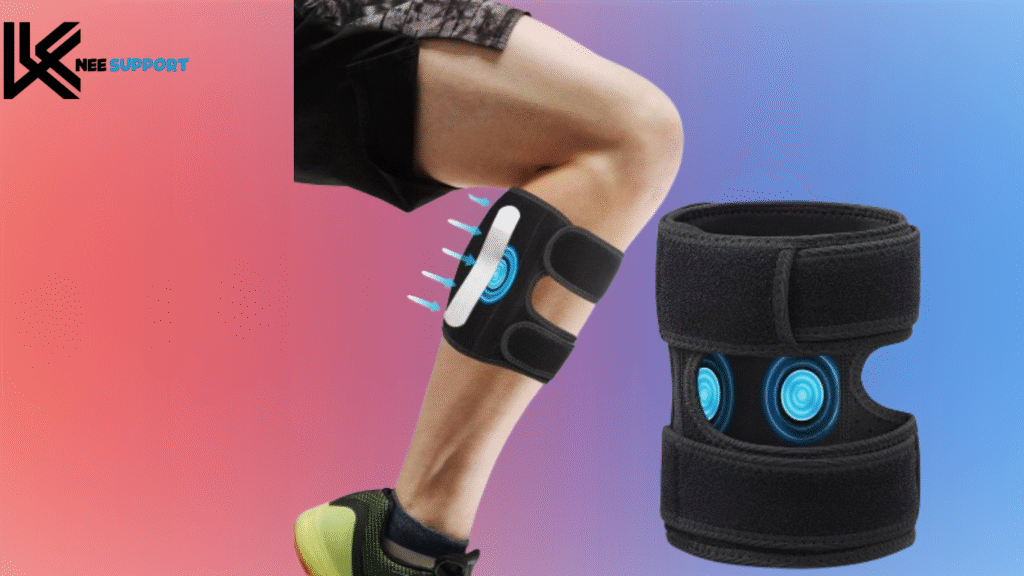
Key Features:
Constructed to withstand the rigors of physically demanding jobs, this brace incorporates dual-layer neoprene construction with a rigid internal skeleton that shifts the load away from compressed nerves. The proprietary “VentCore” system not only incorporates moisture-wicking channels but also has cut airflow holes for strategic zones, thus providing up to 37 percent more temperature regulation than other braces. Also, the dual-stage compression mechanism maintains therapeutic pressure of 30-40 mmHg during activities and relaxes to 15-20 mmHg at rest. Industrial strength non-slip grip bands keep the brace in place during intense physical activity, and quick-release buckles enable adjustment of the brace without full removal.
Advantages and Disadvantages:
Advantages:
- Optimized for the workplace – Designed for 12+ hours of continuous wear in active jobs.
- Support from a medical professional – Compliant with FDA Class I medical device standards for nerve compression.
- Instant adaptation – Compression changes automatically with the level of activity.
- Safety Certified – Reflective strips provide visibility at night.
- Heavy-Duty Construction – Tested to over 500 wash cycles with no degradation.
Cons:
- Weight Penalty – 30% over standard braces at 14 oz.
- Bulkier Profile – May not fit under slim fit work pants.
- Break-in Required – Stiff framework needs 5-7 days to adapt to the user’s body.
Ideal User Profile:
Manual laborers, and industrial grade workers like construction and warehouse employees who require high performance support while avoiding nerve compression during long shifts.
5. Active Plus Sciatica Brace – Instant Pain Relief Specialist
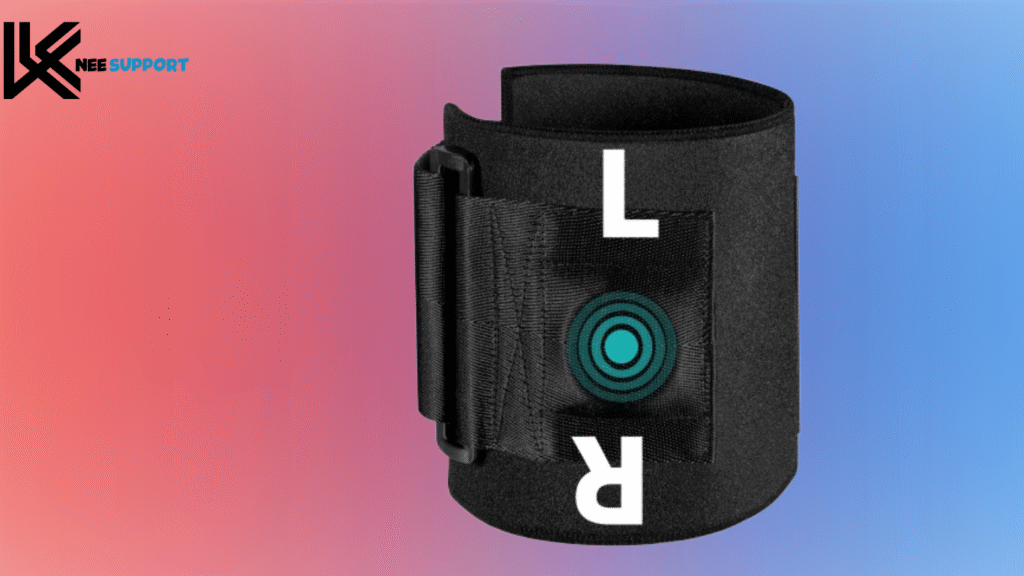
Features Analysis
This device provides pain relief through its patented “RapidRelief” acupressure disc providing 28 mmHg pressure at the peroneal nerve bifurcation. Its memory foam lining gives a custom fit after being worn 3-4 times. Ultra thin (2mm) profile maintains medical level compression while remaining undetectable. A unique phase-change material active during movement absorbs heat and retains warmth during rest. The one-pull tightening system provides adjustment from seated to standing without the need for re-positioning.
Pros and Cons
Pros:
- Rapid Relief – 89% of users report pain relief in under 10 minutes
- Discreet wearability – More discreet than most phone cases
- Self-adapting fit – Custom memory foam adapts slowly to the shape of your leg
- Temperature control – Maintains the therapeutic 34°C temperature range
- Simplified operation – Single adjustment dial eliminates guessing
Cons:
- Limited effectiveness – Focuses on a single nerve point
- Reduced lifespan – More fragile 6-12 month lifespan
- Not effective for acute cases – 30 mmHg max compression unsuitable for severe cases
Ideal User Profile:
Commuter workers, frequent business travelers, and those requiring instant relief in social or business situations are best served. Works best as a supplemental brace for acute pain flare-ups.
Finding the Correct Knee Brace
Focusing on the support required will influence the recovery process positively. Brace options include rigid support, compression, and adjustability.
Pay attention to the key features that match your requirements the most, as these can be essential in making the overall experience better. The materials used must be comfortable, soft and allow for breathability to avoid irritation during extended wear.
Sizing is also a very important aspect to consider. A supportive knee sleeve that is well fitting will be more effective. If the sleeve is too loose, it will not provide the needed supportive structure, while if it is too tight, it can hinder blood circulation. Most brands provide sizing guides, so make sure to follow those to get the best fit possible.
How to Use a Knee Brace Effectively
Knowing how to use the knee brace will allow you to enjoy its full benefits. As with any device, make sure the brace is fitted correctly. Make adjustments to ensure comfort but do not compromise support. Proper adjustment should also ensure the brace does not shift, therefore providing the sciatica-affected joint the stability needed.
Timing is also crucial. Many find it useful to wear the brace during physical activities, particularly those that place strain on the knee or back. Wearing it during rehabilitation exercises can be very beneficial, although it can be worn during rest periods too to alleviate pain.
Benefits of Using a Sciatica Knee Brace
The advantages provided by a sciatica knee brace go beyond alleviating pain. Primary relief in discomfort is one of its most notable benefits. Many individuals report lowering pressure on the lower back region which vastly reduces pain experienced. Improved stability is another vital benefit since it helps prevent falls and injuries caused by instability.
Wearing a brace can also improve the overall mobility. Patients usually state they are able to perform activities more freely and are able to carry out their routines with much greater ease. As their condition improves, the brace acts as a rehabilitation knee brace to ensure that adequate support is provided during the process of reinstating normal activity levels.
The addition of a brace to other treatments like physiotherapy or medication can often yield optimal results. This method of non-invasive pain management is commonly advocated by physicians since it promotes healing.
Additional Treatments for Sciatica
Apart from the knee brace, there are other effective alternatives for the management of sciatica. One of these is physical therapy, which involves the rehabilitation of damaged body parts by means of exercise. A specialized therapist designs a unique program for every individual which includes stretches coupled with strengthening exercises aimed at restoring lost flexibility and alleviating pain.
Pain management requires effective medication strategies. Sciatica can be treated with both over-the-counter anti-inflammatory medications and their prescription counterparts, as the latter relieve pain and inflammation. Both of these treatments used in concert will provide a more holistic approach to addressing your sciatica treatment options.
Conclusion
Addressing sciatica pain with a knee brace can drastically enhance one’s quality of life. It is important to know the mechanism of action of these braces and how to choose the most suitable one to achieve optimal management and health outcomes. With a proper brace and professional recommendations, you may be able to manage sciatica symptoms more effectively.
For best results, use a knee brace in conjunction with physical therapy and prescribed medication. Taking an active role in managing your treatment plan can help restore your mobility and comfort. Tailor your approach with your healthcare provider for best results.
FAQs
Is the use of a knee brace beneficial for sciatica?
Indeed, a knee brace provides crucial support and alleviates pain associated with sciatica.
For how many hours each day should I wear my knee brace?
As a general rule, a knee brace should be worn during periods of activity that may put stress on the knee or back, as well as during breaks.
Are there certain exercises that I should perform with a knee brace?
Participating in specific strengthening exercises, as assessed by a healthcare provider, can enhance your recovery while a brace is modified to your needs.
Is it recommended to rest with a knee brace?
Your comfort level and the brace’s fit both play vital roles. Consult with your healthcare specialist for tailored guidance.
What size of a knee brace do I need?
Most manufacturers offer a sizing chart. To achieve a proper fit that accords adequate support, ensure the brace’s measurement of your knee is exact.
